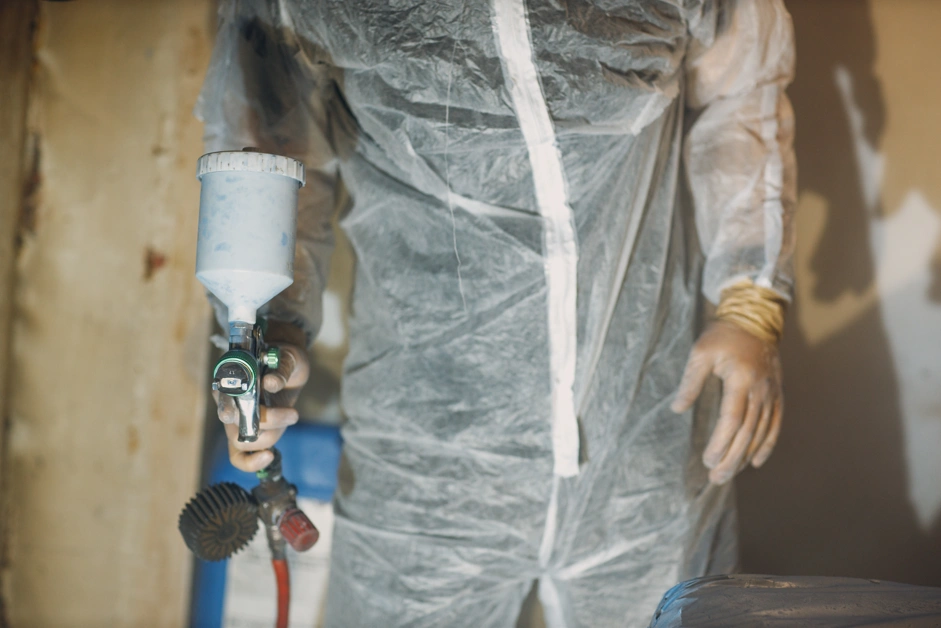Spray foam insulation is a modern solution for enhancing energy efficiency in both residential and commercial buildings. It is made by mixing and reacting unique liquid components that expand rapidly upon application to form a foam. This foam then hardens and creates a tight seal that blocks air, moisture, and temperature transfer. There are two primary types of spray foam insulation: open-cell and closed-cell. Each type has specific benefits depending on the climatic challenges faced by different regions of the USA.
In extreme climates—both hot and cold—insulation performance becomes critical. Poor insulation leads to increased energy bills, reduced comfort, and even structural damage due to moisture intrusion. That’s why spray foam insulation has gained popularity which prevents unwanted air exchange, moisture infiltration, and energy loss. It’s widely used in residential construction, but its impact is even more pronounced in large-scale applications like warehouses, offices, schools, and medical buildings—where commercial foam insulation helps stabilize indoor environments and reduce energy consumption.
How Spray Foam Works in Cold Climates?
Superior Thermal Barrier
In regions such as the Northern Midwest or the Northeastern U.S., winter temperatures can plunge well below freezing. Homes in these areas require insulation that resists heat loss effectively. Spray foam’s high R-value, particularly in closed-cell versions, makes it an excellent choice. R-value refers to the resistance to heat flow; the higher the R-value, the better the insulation’s performance.
Closed-cell spray foam boasts an R-value of about 6 to 7 per inch, far higher than traditional fiberglass or cellulose insulation. This means less heat escapes through the walls, ceilings, and floors during cold winters, helping homeowners maintain warmth with lower heating costs.
Airtight Seal Against Drafts
One major issue in cold climates is air leakage. Gaps and cracks in the building envelope allow warm indoor air to escape while letting cold air in. Spray foam insulation expands as it is applied, filling in every crevice. This air-sealing property is particularly important for preventing drafts and keeping indoor temperatures consistent.
Moisture Resistance and Mold Prevention
Snow and ice can lead to moisture accumulation in attics and walls. Closed-cell spray foam not only insulates but also acts as a moisture barrier. Its dense structure resists water absorption, minimizing the risk of mold growth and moisture-related structural damage. This feature makes it ideal for crawl spaces, basements, and roof decks in snowy regions.
Spray Foam in Hot and Humid Climates
Reflecting Heat and Reducing Cooling Loads
In states like Arizona, Texas, and Florida, extreme heat and sunlight can put significant stress on air conditioning systems. Spray foam insulation reduces solar heat gain by blocking radiant heat from entering through roofs and walls. When installed in attics or beneath roofing systems, it maintains cooler interior temperatures, often reducing cooling costs by up to 40%.
Managing Humidity and Condensation
Hot climates are frequently humid, and humidity introduces challenges like condensation, mold, and poor indoor air quality. Spray foam insulation, especially closed-cell types, resists water vapor and minimizes the risk of condensation forming inside walls or ceilings. This is crucial in Gulf Coast states, where moisture management is as important as thermal performance.
Moreover, by reducing air infiltration, spray foam helps HVAC systems maintain desired humidity levels without being overworked. This not only improves comfort but also extends the lifespan of HVAC units.
Spray Foam in Desert and Arid Climates
Combatting Temperature Swings
In desert regions such as Nevada and parts of California, temperatures can swing drastically between day and night. Spray foam’s ability to create a sealed building envelope ensures indoor temperatures stay stable regardless of external fluctuations. This thermal stability reduces energy consumption and makes living conditions more comfortable.
Dust and Pest Control
Arid environments often struggle with dust and pests entering buildings through gaps. Spray foam insulation seals off entry points, preventing both issues. Homeowners in desert regions find that properly installed spray foam leads to cleaner indoor environments and fewer pest-related problems.
Spray Foam in Coastal and Hurricane-Prone Areas
Structural Reinforcement
One often overlooked benefit of closed-cell spray foam is its contribution to structural strength. When applied between wall studs, it adds rigidity to the structure, making buildings more resistant to wind pressure. In hurricane-prone regions like the southeastern coast, this added structural integrity can be a valuable asset during storms.
Water Intrusion Prevention
Coastal homes are exposed to high humidity, wind-driven rain, and even storm surges. Spray foam’s water-resistant nature provides an added layer of defense against water intrusion. When used in conjunction with proper weatherproofing systems, it helps keep homes dry even during extreme weather events.
Energy Savings Across All Climates
Reduced HVAC Dependence
Regardless of climate zone, spray foam insulation reduces the workload on heating and cooling systems. This translates to lower utility bills year-round. For instance, in both Minnesota and Arizona, homeowners have reported energy savings of 30% or more after upgrading to spray foam.
Long-Term Return on Investment
While the upfront cost of spray foam insulation is higher than traditional options, the long-term return on investment is substantial. Lower energy bills, fewer HVAC repairs, increased home comfort, and potential tax incentives or rebates all contribute to its value. Additionally, the material has a long lifespan—often over 20 years—without significant degradation in performance.
Challenges and Considerations in Extreme Climates
Installation Must Be Professional
In extreme climates, the performance of spray foam is only as good as the installation. Poor application can result in gaps, incomplete coverage, or off-ratio mixing, all of which compromise performance. Always choose experienced, certified spray foam contractors, especially in areas where temperature extremes push building materials to their limits.
Ventilation Adjustments
Because spray foam seals a home so tightly, adjustments to ventilation systems are often necessary. In cold climates, this might mean installing mechanical ventilation like an HRV (heat recovery ventilator) to maintain fresh air flow. In hot climates, adequate attic ventilation may need to be maintained or adjusted depending on where the foam is installed.
Building Code Compliance
Some regions have strict insulation requirements due to fire safety, vapor barriers, or wind resistance. It’s essential to ensure that the spray foam being used complies with local building codes. For example, certain open-cell foam types may require ignition barriers in attics or crawl spaces.
Read also: How Much is Spray Foam Insulation?
Real-World Results
In Alaska, homeowners using closed-cell spray foam in attics and crawlspaces have reported drastically reduced heating costs and greater comfort in sub-zero temperatures. In Florida, spray foam retrofits in attics have helped reduce moisture intrusion and mold growth in older homes.
In California’s Central Valley, known for extreme summer heat, sealed attics with spray foam have led to up to 50% reductions in air conditioning usage. Meanwhile, in New York, spray foam insulation has become a go-to choice in Passive House designs seeking to eliminate thermal bridging and reduce heating needs to near zero.
Conclusion
Spray foam insulation is undeniably one of the most effective solutions for managing extreme climates across the United States. Whether it’s battling brutal winters, resisting coastal storms, blocking out desert heat, or managing tropical humidity, spray foam rises to the challenge.
Its superior R-value, air sealing capabilities, moisture resistance, and structural benefits make it a top contender for anyone looking to insulate their home or business in a demanding climate. When installed properly and tailored to regional needs, spray foam not only boosts energy efficiency but also enhances overall comfort and building longevity.
If you’re building new construction or upgrading your existing insulation, consult with a professional to determine the right spray foam system for your region. The upfront investment pays dividends for decades—especially when Mother Nature is at her most extreme.
At Foam Masters USA, we specialize in high-performance spray foam insulation tailored to your specific climate needs. Whether you’re upgrading an older home, building new, or tackling commercial projects, our expert team ensures precision installation and long-lasting results.
Ready to protect your property from extreme temperatures and rising energy bills? Contact us today for a free consultation and experience the ultimate in insulation performance.





